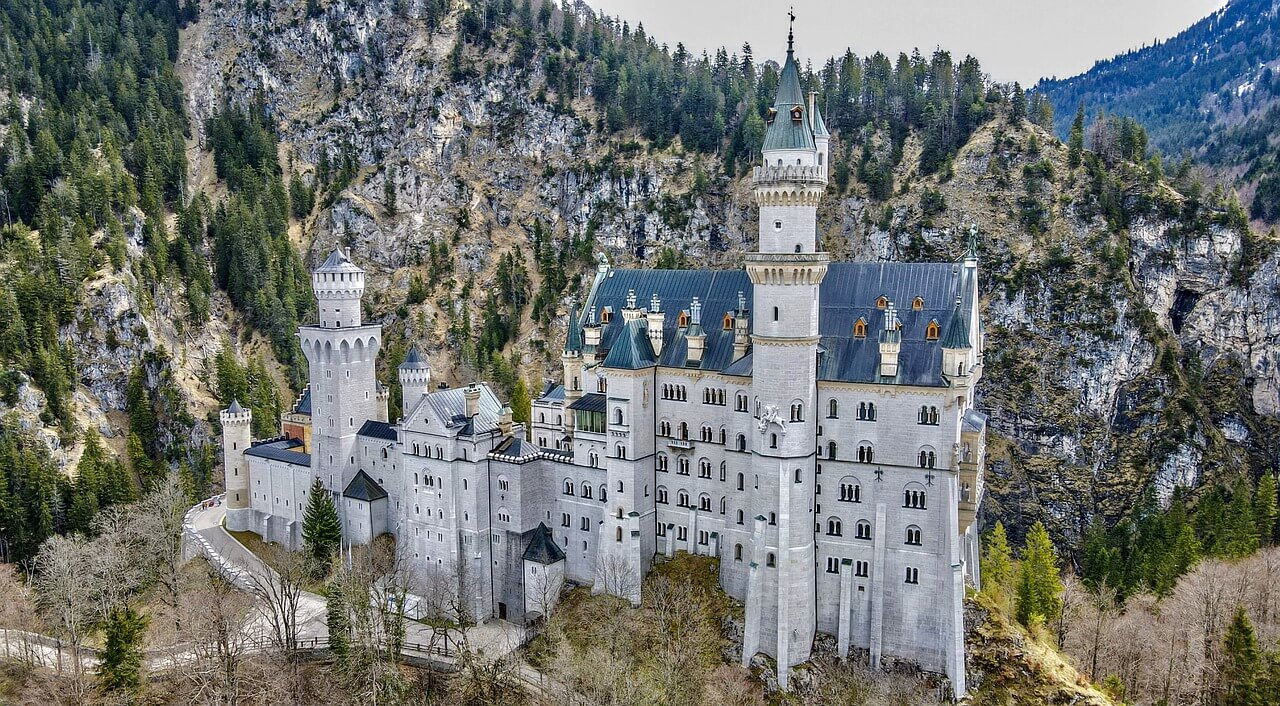*FYI - this post may contain affiliate links, which means we earn a commission at no extra cost to you if you purchase from them. Also, as an Amazon Associate I earn from qualifying purchases. Check out our Privacy Policy and Disclosure for more info.
Planning a trip and wondering which places to visit in Bavaria? There are more than enough fairytale destinations to keep you entertained for a long time!
The Free State of Bavaria is a state of Germany located in the southeast of the country, most known for its unique culture and architecture, as well as famous events like Oktoberfest.
In this list of beautiful places to visit in Bavaria, we’ll be sharing some of our favorite destinations in this gorgeous German state, including the most magical castles, prettiest cities and natural delights.
We hope you enjoy our recommendations, and be sure to let us know in the comments if there are any additions you would add to our list!
1. Neuschwanstein Castle & Hohenschwangau Castle
Possibly the most famous of Bavaria tourist attractions are the two fairytale castles of Neuschwanstein and Hohenschwangau located on two hilltops about a kilometer apart.
Both castles have links to Ludwig II who was King of Bavaria from 1864 until 1886. Bavaria was once a separate kingdom but became part of the German Empire (which was part of Prussia) during Ludwig’s rule.
Ludwig II is an interesting historical figure, known for extravagance which can be seen in the incredible opulence of Neuschwanstein Castle. Hohenschwangau was Ludwig’s childhood home, and he had Neuschwanstein constructed as a retreat but unfortunately died before it was completed.
Neuschwanstein is one of the most famous attractions in the whole of Germany and served as inspiration for Sleeping Beauty’s castle at Disneyland. More than 1.3 million people visit it each year and while photography is not permitted inside, the exterior certainly offers plenty of amazing opportunities to capture the unforgettable castle on film!
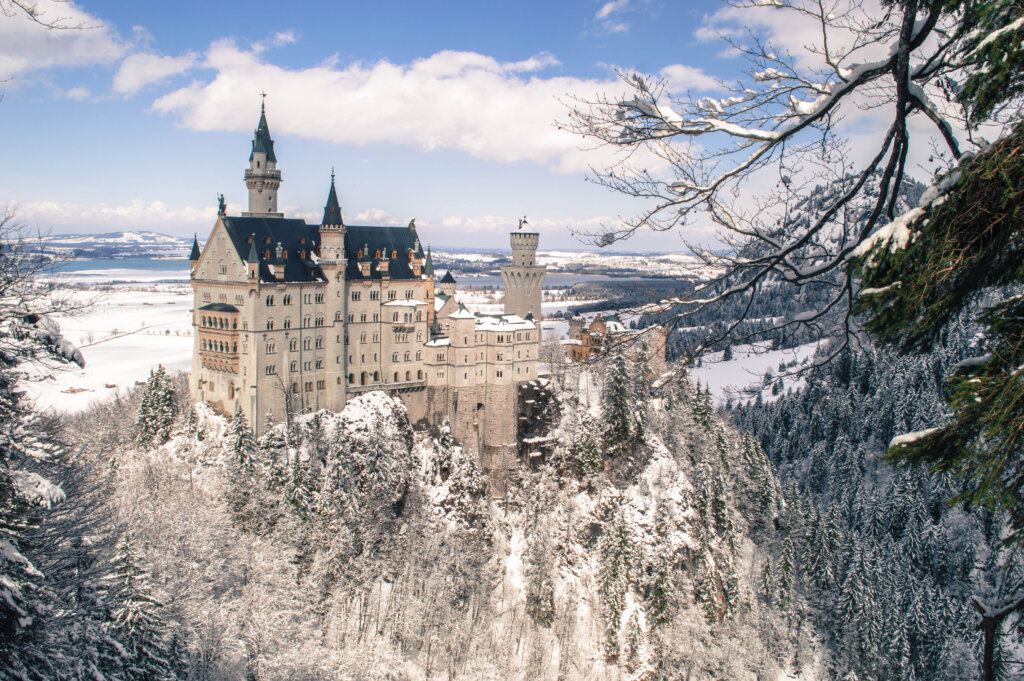
And while Hohenschwangau Castle might not be quite as famous or fairytalesque as Neuschwanstein, it’s still worth a visit if you are into pretty castles and/or the life of Ludwig II, plus it’s right ‘next door’ so combining both is ideal.
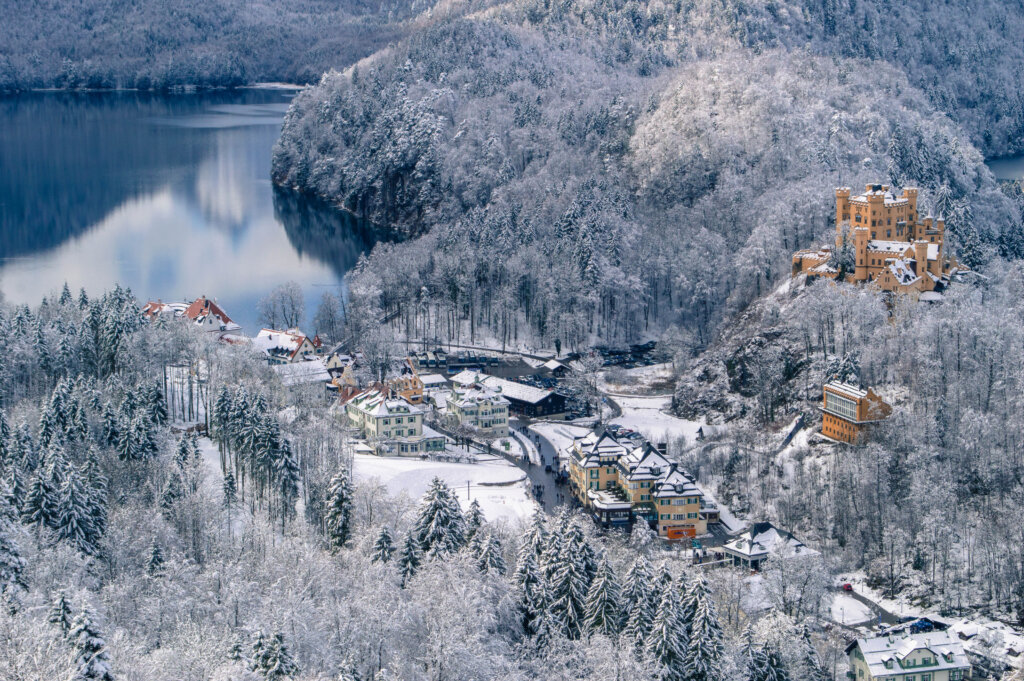
2. Munich
Munich is the Bavarian capital, and is (of course) one of the best places to visit in Bavaria as well, thanks to its multitude of historic and modern attractions.
Munich is possibly most famous for hosting Oktoberfest each year, a type of beer and funfair festival held in Germany called a Volksfest. Oktoberfest is the largest Volksfest in the whole world, attracting more than six million visitors annually for a period of 16 -18 days.
Beyond epic beer festivals however, Munich has a ton to offer. As the third-largest city in Germany, it is home to a huge amount of fun things to explore, like museums, viewpoints, and great restaurants. It’s also known as a green city, with plenty of parks and gardens, as well as a river for surfing!
Other must-sees in Munich include a variety of stunning churches, palaces and architectural styles. Even if you don’t visit during Oktoberfest, Munich is also home to many popular beer halls and beer gardens. And, at Christmas, the city is filled with some of the most enchanting, and sometimes unique, Christmas markets in Germany.
To sum things up, Munich is one of the best places to visit in Bavaria year-round, so make sure you add it to your itinerary.
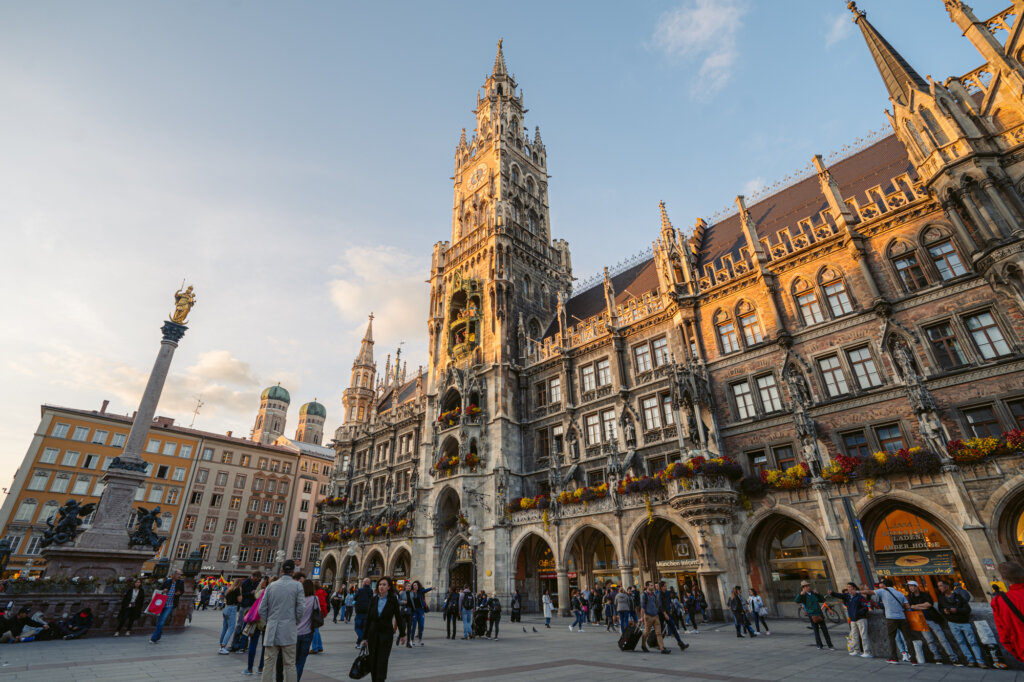
3. Berchtesgaden National Park
Another one of the most beautiful places in Bavaria is Berchtesgaden National Park, which is located right on the border with Austria and is also a UNESCO Biosphere Reserve.
The area where Berchtesgaden National Park can be found in what’s known as the German Alps, so (as you can expect) it’s very mountainous… but it’s also filled with glorious lakes and views, making it a true must-visit for nature lovers (or simply suckers for a great photo opp).
Königssee Lake for instance is located within this national park, with some of the cleanest waters in Germany (it’s advertised as being THE cleanest lake in Germany)… and a touristy but glorious boat ride experience that takes you over to another must-see: Lake Obersee.
Besides just these highlights, the entire park is filled with rugged cliffs, forests, rivers and glaciers to explore. It’s also home to much of Germany’s wildlife, with visitors often being able to spot chamois, ibex, red deer, marmots, golden eagles and more than 700 different kinds of butterflies!
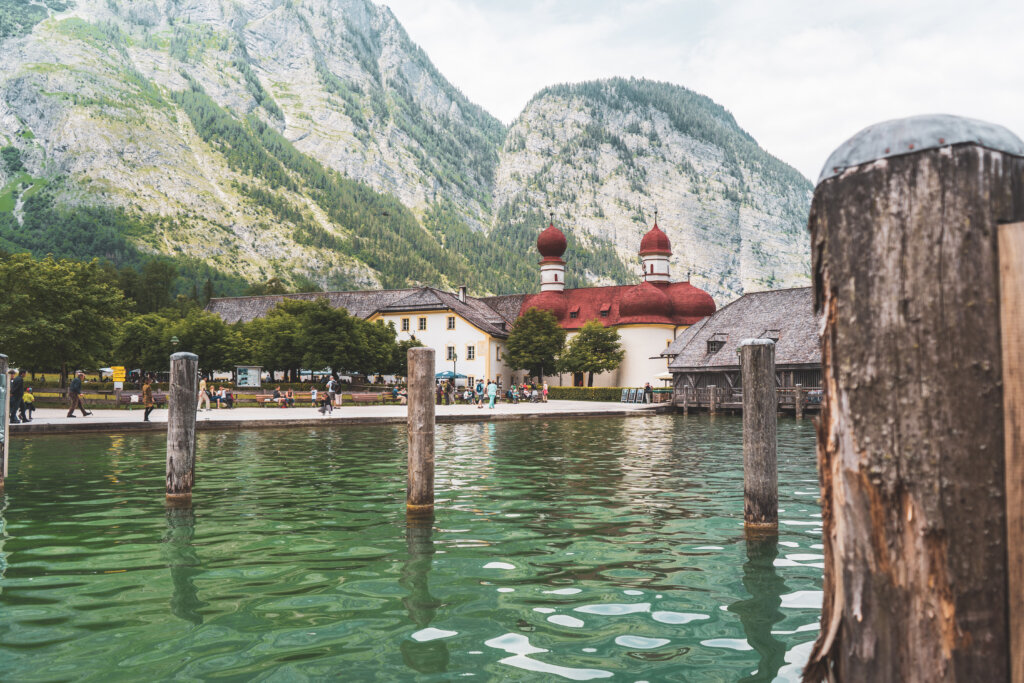
4. Rothenburg ob der Tauber
There are only three towns in the whole of Germany with completely intact city walls, and one of those is the beautiful Rothenburg ob der Tauber.
Many visitors flock to this town in the Franconia region of Bavaria, partly because its medieval old town looks like something out of a fairytale. Indeed, Rothenburg ob der Tauber is part of the Romantic Road traveling route through southern Germany and is also believed to be the inspiration for the town in Disney’s “Pinnochio”.
Rothenburg ob der Tauber is known for the many half-timbered houses as well as the imposing fortified city walls, a castle and plenty of stunning churches. Of course, like many German towns, there are also quite a few excellent museums; including The Criminal Museum, a Doll and Toy Museum plus, our personal favourite, a Christmas Museum located above the world-famous Käthe Wohlfahrt Christmas shop.
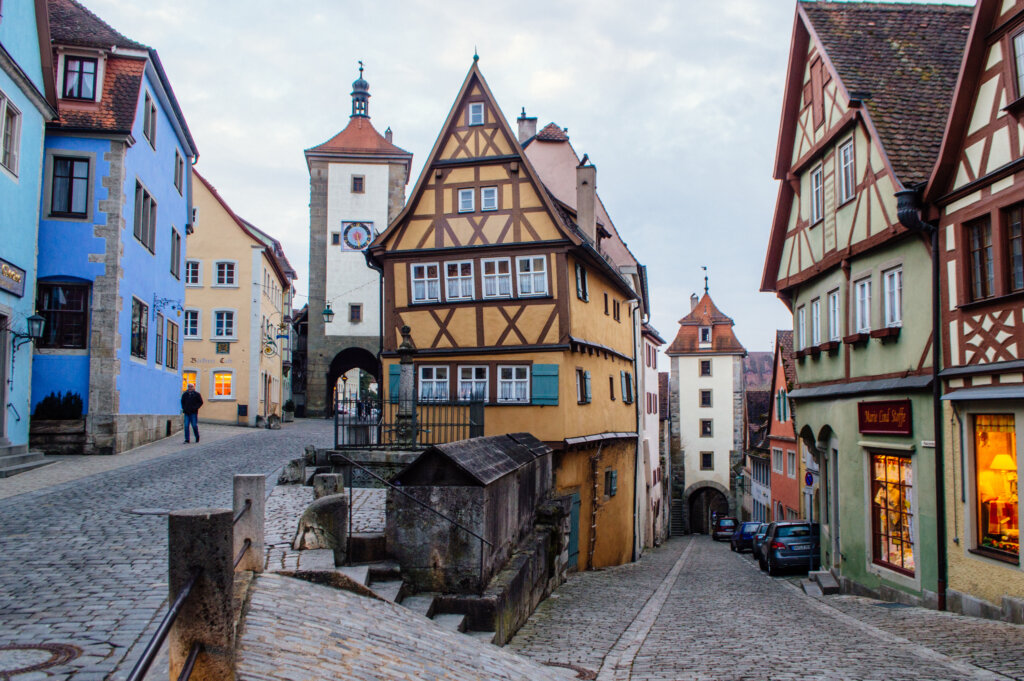
5. Bamberg
Bamberg is another gorgeous and historic town in Bavaria, dating from the 9th-century, and it’s a UNESCO World Heritage Site to boot.
Located on the shores of River Regnitz, Bamberg is built across seven hills, each crowned by a church. Bamberg’s Altes Rathaus (Old Town Hall – pictured below) is one of the most famous buildings, sitting on its own little island in the river and now contains the largest collection of Ludwig Porcelain in Europe.
Other stunning sights in Bamberg include Altenburg Castle – which sits on the highest of the seven hills, Schloss Seehof – a 17th-century palace, and Bamberg Cathedral which has four very distinctive green towers.
Bamberg is also, of course, home to some excellent breweries as well, along with a museum dedicated to the history of beer production in Bavaria and Franconia; the Franconian Brewery Museum.
Make sure to sample some of the famous Bamberg Rauschbier (smoked beer) while you’re here – it’s an acquired taste, but worth sipping at least once!
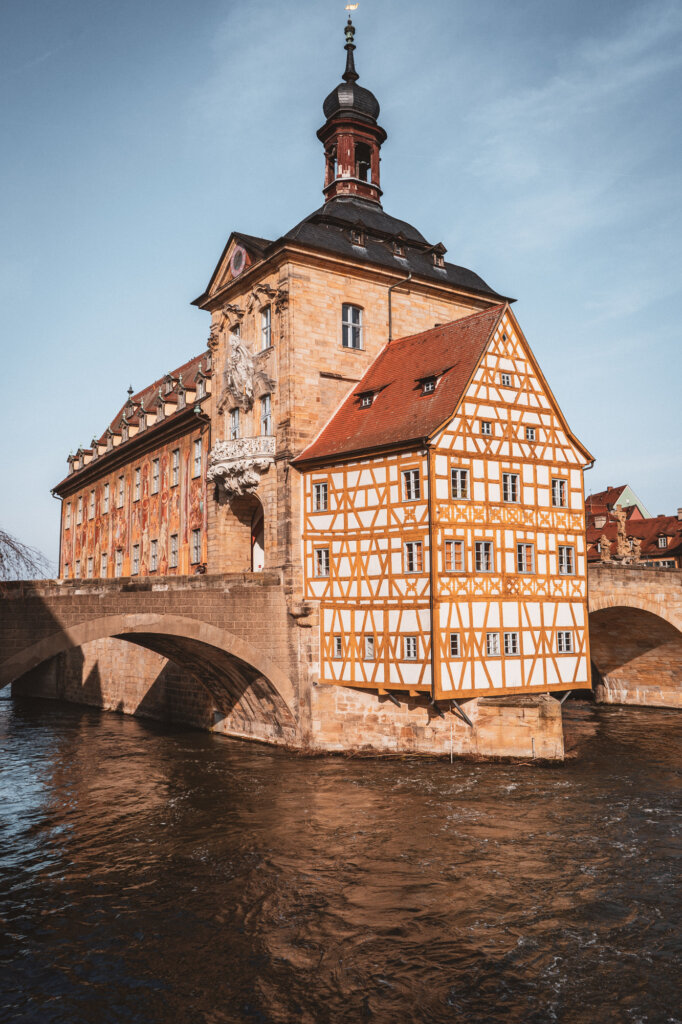
6. Nuremberg
There are many beautiful medieval towns and cities in Bavaria, but Nuremberg is one that should definitely not be overlooked.
While its name is most commonly linked to the Nuremberg Trials, this city is also filled with fairytale architecture, including one of Europe’s largest castles, many stunning theatres, museums and even universities.
In terms of things to see to Nuremberg, Nuremberg Castle is a once-mighty fortress that dominates the skyline and is great for learning about the Holy Roman Empire or just getting the best views over the city!
The Germanic National Museum is another noteworthy must-visit, and is the largest museum of cultural history in Germany. Other fascinating museums include a toy museum, transport museum and multiple art museums/galleries.
PS: Visiting at Christmas? Nuremberg’s Christkindlmarkt is also world-famous and makes the city even more magical during the festive period!
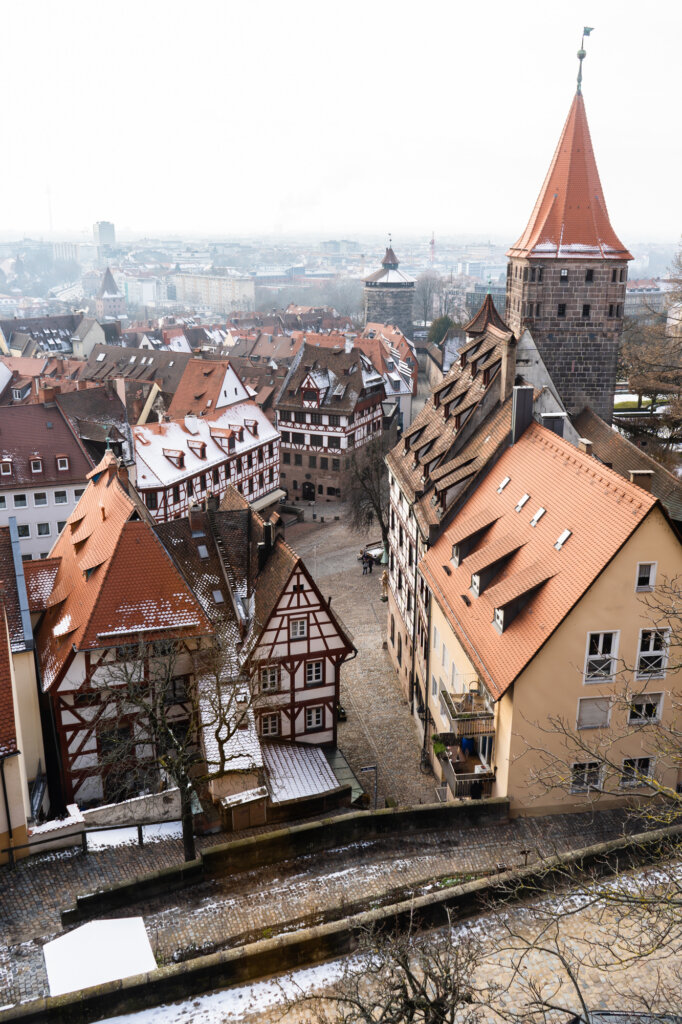
7. Garmisch-Partenkirchen
Garmisch-Partenkirchen is a German ski resort and town that contains some of the most stunning natural places to see in Bavaria.
Famous for hosting the 1936 Winter Olympic Games, Garmisch-Partenkirchen is understandably popular during the ski season for visitors who enjoy alpine skiing and other winter sports. Every year many World Cup ski races are held here, as well as a ski-jumping contest on New Year’s Day.
Garmisch and Partenkirchen were actually two separate towns until they were forced to become one by Hitler for the upcoming Olympics. Today they remain one town, but while the Garmisch section is fairly modern, the cobblestone streets of Partenkirchen feel more historic.
The area is just as lovely to visit during summer when hiking is the most popular pastime. Don’t be surprised to see traffic stopped for local dairy cows being herded up or down from the mountain meadows!
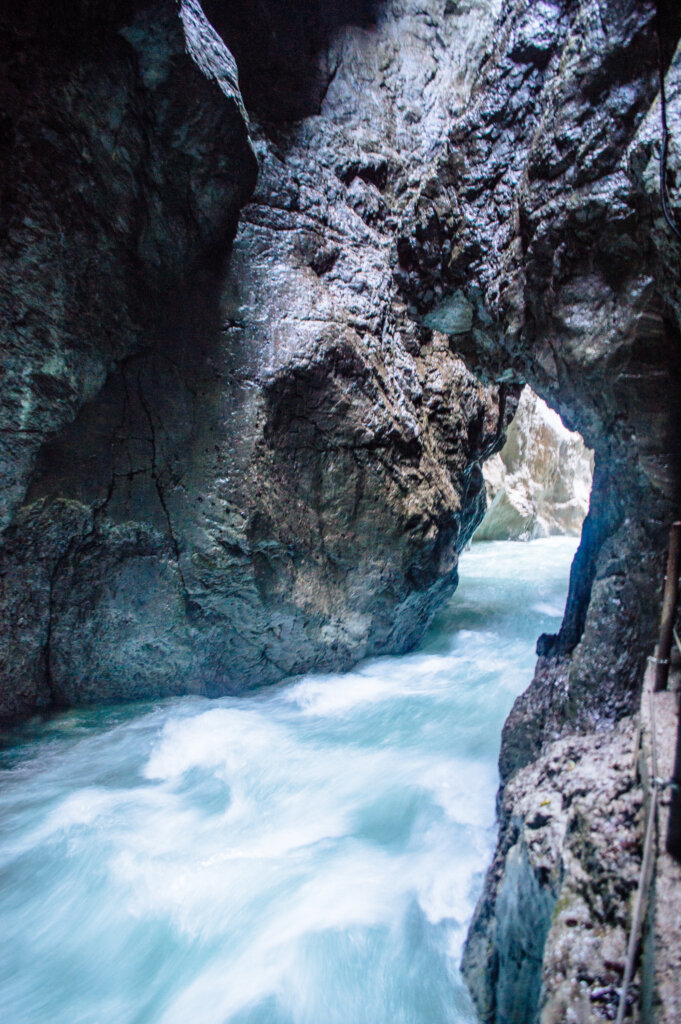
8. Eibsee
One of our favourite Bavaria places to visit is Eibsee Lake, which can be found on the northern foot of the Zugspitze (more on that in the next section).
Formed more than 3,000 years ago and considered one of the most beautiful lakes in the Bavarian Alps, Eibsee is located 973.28 metres (3,193.2 ft) above sea level. In summer, the green-tinted waters are popular with visitors exploring via pedal boats, rowing boats and stand up paddleboards.
Many locals head to Eibsee to fish during the fishing season from May 1 to October 31. There are also multiple hiking trails around the lake, at a variety of difficulty levels.
But of course, Eibsee is gorgeous to visit year-round. In winter the lake usually freezes completely, which looks absolutely incredible.
Looking for an extra special perspective? The Zugspitze cable car (Seilbahn Zugspitze) departs from right next to the lake and offers up amazing aerial views of Eibsee as you ascend or descend.
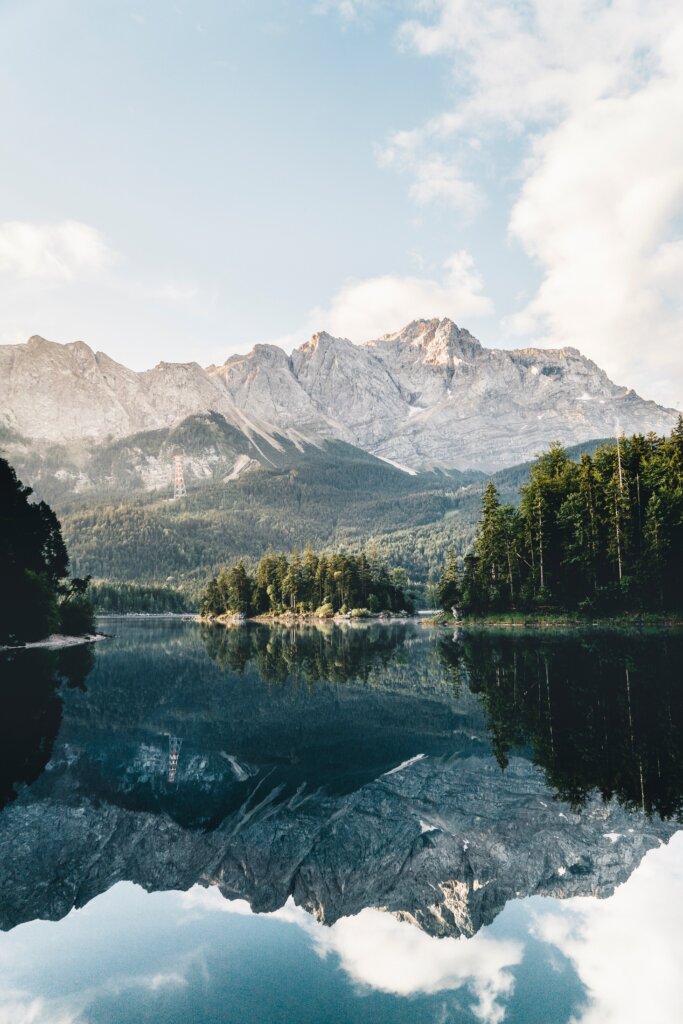
9. Zugspitze
One of the most unique things to see in Bavaria is Zugspitze, which is also the highest mountain in Germany.
As we mentioned, it’s possible to ride the scenic cable car to the summit from next to Eibsee Lake. The Selibahn Zugspitze is a pretty incredible feat of engineering and holds three world records; 1) the world’s highest steelwork pylon for aerial tramways, 2) the world’s greatest overall height difference of 1,945 meters over one section and 3) the world’s longest unsupported span, measuring 3,213 meters!
Once on Zugspitze, there are nine ski lifts to reach the many ski slopes, as well as viewing platforms, a panoramic restaurant and accommodation. Along with skiing and snowboarding, Zugspitze is popular for hiking and mountain climbing in the warmer months.
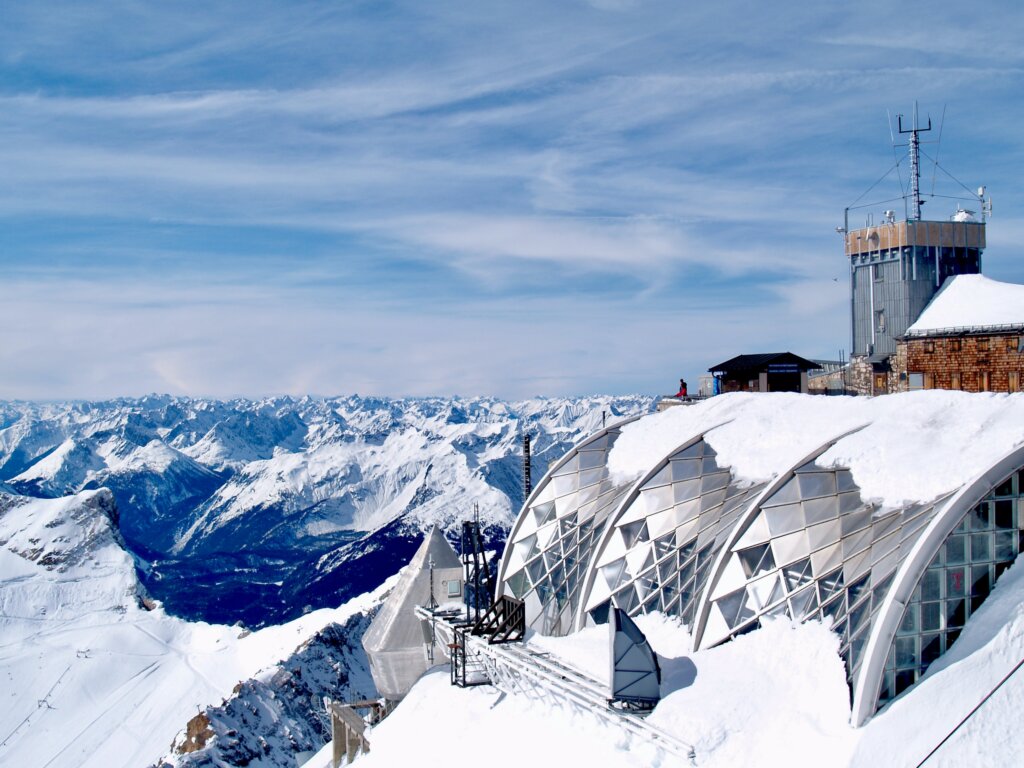
10. Kelheim
Kelheim is a relatively small village in Bavaria, with a cute medieval town center and an impressive monument gazing down over the town from a nearby hill.
It’s this monument in particular that makes Kelheim such a worthwhile place to visit in Bavaria!
The Befreiungshalle (Liberation Hall in German) is a monument commissioned by King Ludwig I of Bavaria to commemorate victory over Napoleon during the wars of liberation (1813 to 1815). Built in the neo-classical style, it looks like a massive tiered wedding cake from a distance!
Up close, however, visitors to the Befreiungshalle will see a Roman-style exterior with 18 statues representing the German tribes. The interior is open to the public and features floor tiles that look like an M.C Escher painting, along with 34 marble goddesses of victory holding hands in a circle.
While in Kelheim, we also recommend hiking over to the Kloster Weltenburg, a Benedictine Monastery that’s famous for its brewery, which is also the oldest monastery brewery in the world!
PRACTICAL INFORMATION FOR VISITING: It costs €4.50 for adults to visit the Liberation Hall. It’s open from 9am – 6pm between April 1 – November 1, and from 10am – 4pm between November 1 – March 31. It’s also closed on December 24 and 25, New Year’s Eve, New Year’s Day and Shrove Tuesday.
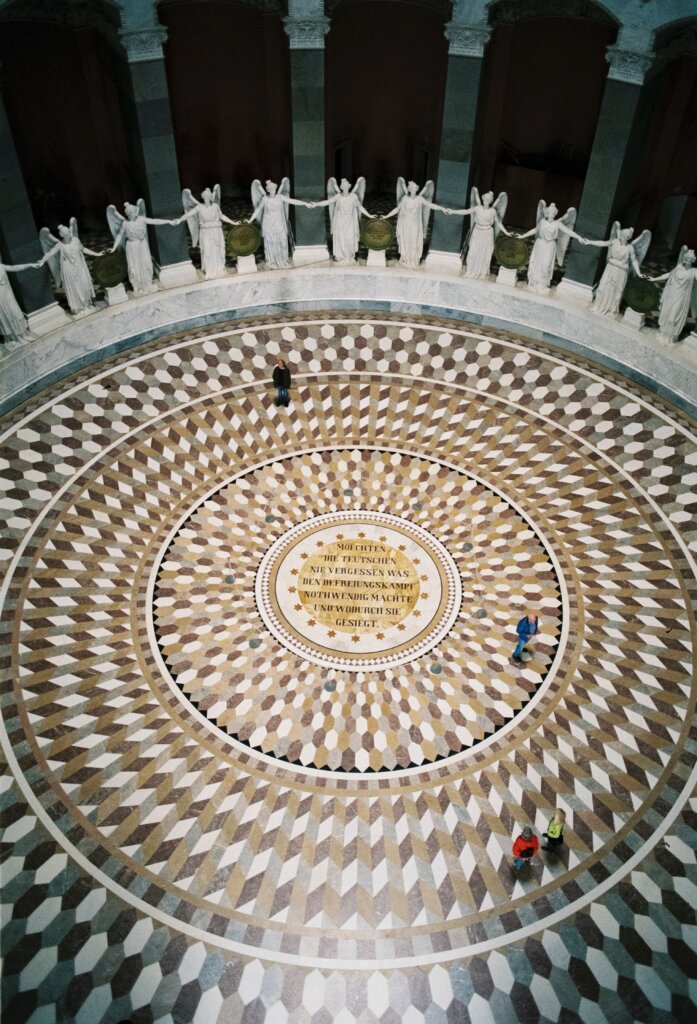
11. Walhalla
The Walhalla Memorial is one of the most fascinating Bavaria attractions; a hall of fame built for distinguished Germans in the style of a Greek temple and named after a location from Norse mythology!
The Walhalla is located on a hill near the town of Donaustauf, overlooking the River Danube. It was organized by Crown Prince Ludwig I of Bavaria decades before Germany became the modern official country as it’s known today. Back then there wasn’t a “German” identity, but Ludwig wanted to remind the Germanic peoples of great figures in their past.
The monument was built between 1830 and 1842, overseen by the neoclassical architect Leo von Klenze. Valhalla is the warrior’s paradise from Norse mythology (pronounced Walhalla in German) and the memorial features friezes of victory along with busts of famous German individuals.
PRACTICAL INFORMATION FOR VISITING: Like the Befreiungshalle (which is about a 40-minute drive away), Walhalla costs €4.50 for adults. It’s open from 9am – 6pm between April to October and from 10am – noon, then 1pm – 4pm between November and March. It’s also closed on December 24 and 25, New Year’s Eve, New Year’s Day and Shrove Tuesday. You can also purchase combination tickets to see Walhalla, the Befreiungshalle and Prunn Castle (20 minutes from Befreiungshalle) for €12.
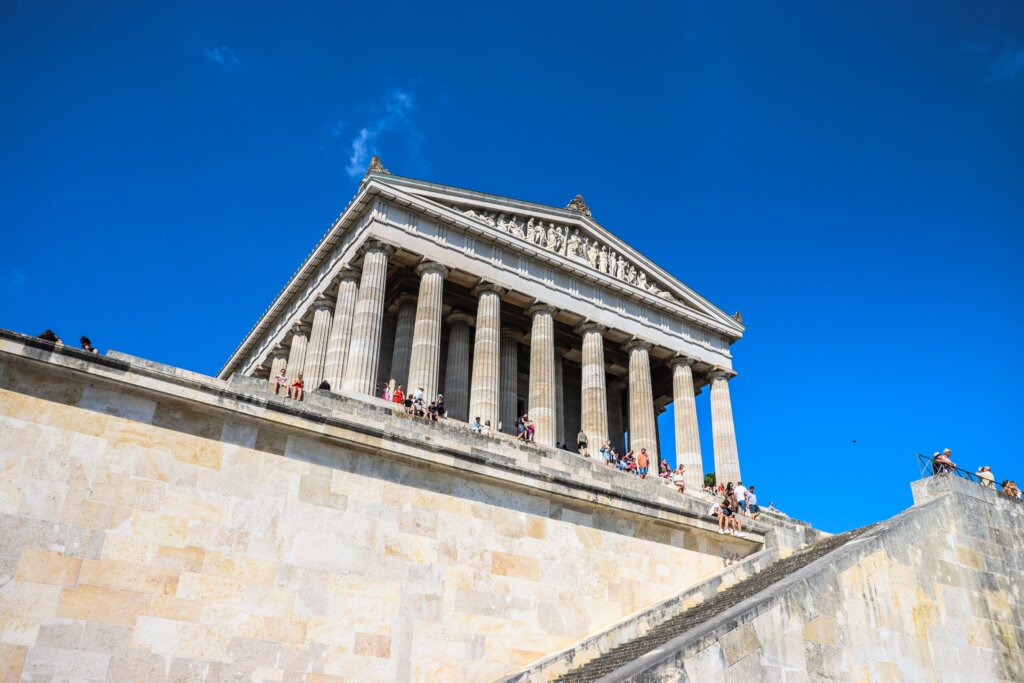
Did we miss any of your favorite places to visit in Bavaria?
Let us know in the comments so we can add more to our list!
